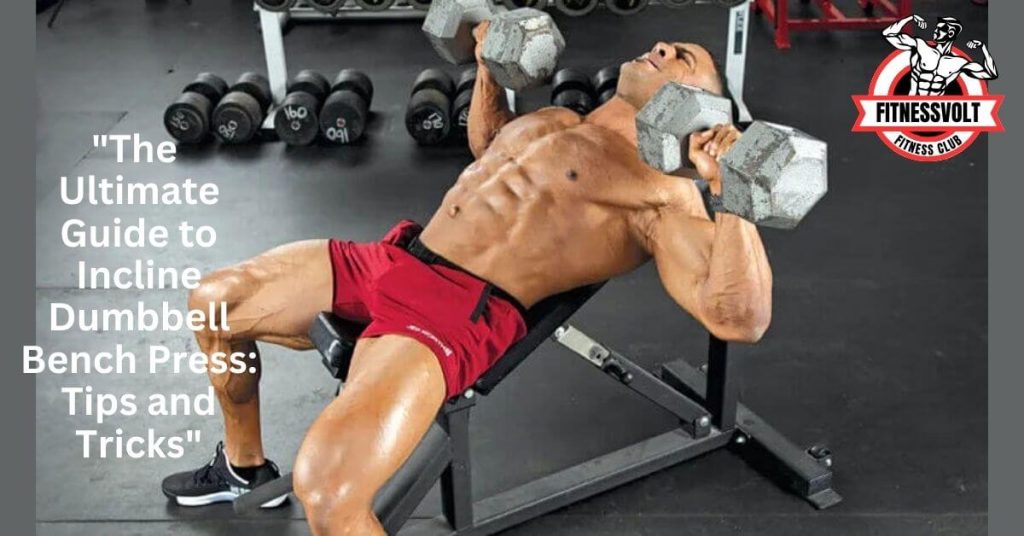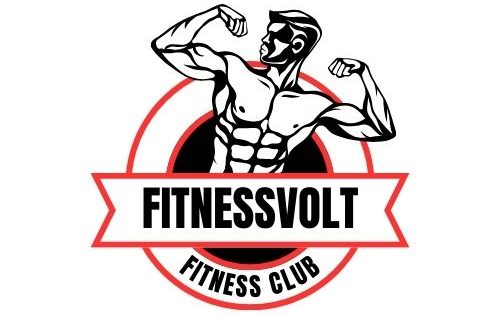The incline dumbbell bench press is something every man should have in their arsenal if they dreams of carving out a sharp upper chest. Unlike flat bench presses, which work the middle of your pectoral muscles, this exercise works the top portion so that you have a more complete and balanced chest. Even better, why dumbbells instead of barbells?
More range of motion and more muscle involvement No matter how long you’ve been lifting, or whether you’re brand new to the gym, improving this movement can help make your chest grow.

Understanding the Incline Dumbbell Bench Press
What is the Incline Dumbbell Bench Press?
The Incline Dumbbell Bench Press is a compound exercise that works the top part of your chest, more specifically the clavicular head of the pectoralis major. When you move the bench to an incline (usually around 30 to 45 degrees), you change the focus from the middle of your chest, which you work during a flat bench press, to higher in your chest. This inherently turns it into a staple movement for those who desire a complete and in-shape physique.
Key Muscles Targeted
- Pectoral Muscles: Mainly the upper portion of your chest (clavicular head of the pectoralis major).
- Shoulders (Deltoids): Especially the front deltoid since it assists in pressing the weight up.
- Triceps: These assist the main movers in extending the elbows during the press.
Comparison to Other Chest Exercises
While it may not be to the level of a flat bench press (though many debate this point), there are some very unique benefits afforded by the incline dumbbell bench press in terms of upper chest development. Whereas the flat bench press hits your entire chest, albeit with less emphasis on the upper chest due to its biomechanics the incline angle distributes more of the work onto your shoulders and traps, thereby better equipping you to round out your pecs.
Setting Up for the Exercise

Choosing the Right Bench Angle
The incline of the bench is vital to hit the upper chest properly. To target more of the upper muscles, set the bench to 30 — 45 degrees. The steeper the incline, the more you will work your shoulders and the less you will use your chest, while a lower incline is just the opposite case. ADJUST BENCH: Your comfort & the targeted muscle group.
Selecting the Appropriate Dumbbell Weight
Picking the correct weight sets you up to perform them properly and remain safe. Use a weight that you can handle with good form, but also allows you to challenge your muscles. Generally speaking, you need to be able to do 8–12 reps with the chosen weight and still maintain good form.
Proper Positioning on the Bench
Recline in the slanted seat and your feet should be flat on the floor. Your lower back should be fully pressed to the bench with a very small arch in your upper back. Grasp the dumbbells at shoulder height, palms forward. Keep your head, shoulders, and butt in contact with the bench during this movement process.
Step-by-Step Guide to Performing the Incline Dumbbell Bench Press
Starting Position
Start by Sitting on an incline bench with a dumbbell in each of your hands. Lie back with dumbbells at shoulder level, elbows bent and palms facing forward. Which is where we want our feet to be… flat on the floor. The stable base of support for this lift.
Execution: Lowering the Dumbbells
Slowly bring the dumbbells down, bending at the elbow with them pointing 45 degrees towards your body. From the bottom position, slowly lower the weights to just below chest level; and you should feel a nice stretch in your pectorals. Lower slowly to avoid extra stress on the shoulders with uncontrolled weights.
Execution: Pressing the Dumbbells Upward
Extend your elbows and press the dumbbells back up to the starting position, drawing the weight together above your chest. Focus on contracting the chest muscles at the top of the movement. Do not lock out your elbows all the way to leave constant tension on the muscles throughout the movement.
Breathing Techniques During the Exercise
Breathing is important for staying in control and maintaining performance. As you return your body to the starting position, what makes Incline Press a One and Two Move is that we are lowering the dumbbells on an inhale and pressing them upward with full force on an exhale. This stabilizes your core and brings the oxygen necessary to use your muscles during this exercise.
Common Mistakes to Avoid
Examples of common faults are excessive anterior pelvic tilt/arching of the lower back (seen in image 1), which leads to possible risk of injury, flare of elbows during the press (which results in less chest activation and more risk for shoulder problems). Use a weight that you can perform the entirety of every movement with it shouldn’t be too heavy, or too light.
Variations of the Incline Dumbbell Bench Press
Alternating Dumbbell Press
Rather than pressing both dumbbells at the same time, press one and keep the other in a lowered position. This variation increases the time under tension for each arm, in addition to adding a core stability element.
Incline Dumbbell Flyes
Notice that this version permits a broader arm movement, further isolating the chest muscles. Lying on the incline bench, extend arms out to sides with a slight bend in elbows; then bring dumbbells together for a hug.
Single-Arm Incline Dumbbell Press
Pressing one arm at a time will challenge the core, and stabilize it even more By doing so, this variation fixes muscle imbalances and increases unilateral strength.
Incorporating the Incline Dumbbell Bench Press into Your Workout Routine
Best Time to Perform the Exercise
And so doing the incline dumbbell bench press first in your workout will go better when you have more energy and lift heavier weights. Or do it as an accessory exercise after a flat bench press to complete your chest workout.
How Many Sets and Reps to Perform
The most common suggestion is to do 3–4 sets of 8–12 reps. The 6-20 rep work range is perfect for muscle hypertrophy, making it a great way to increase strength and size in the upper chest.
Pairing with Other Exercises for a Balanced Chest Workout
To design a complete chest workout, incorporate incline dumbbell bench presses with flat bench presses, decline bench preserves, and chest flyes. This is the perfect combination when it comes to targeting all aspects of your chest equally, which in turn promotes balanced muscle growth.
Benefits of the Incline Dumbbell Bench Press

Improved Upper Chest Strength and Definition
Once you see the results of this in action in your own body, I guarantee that you will be convinced to start seriously devoting yourself to performing the incline dumbbell bench press regularly so that you can maximize both the size and definition of your upper chest, making it stand out more prominently when looking straight ahead at yourself through a mirror.
Enhanced Shoulder Stability and Mobility
Because the deltoid muscles, also serve as a function stabilizer of the shoulder and can translate to enhancing shoulder stability and mobility among all vital for preventing injury in other upper body movements.
Increased Range of Motion Compared to Barbell Presses
Dumbbells provide more ROM than barbells so you can get a deeper stretch at the bottom and better contraction at the top. That extra room for movement allows us to go deeper into movements leading to more muscle activation and growth.
Symmetry and Balance in Muscle Development
As both sides of your body are forced to work independently, using dumbbells can rectify any imbalances between the two halves and can help promote balanced muscle development.
Common Mistakes and How to Avoid Them
Arching the Lower Back
Over-arching the low back can be a bad thing. Keep your back in the natural arch of the spine, which is called a neutral position.
Using Too Much Weight
When you lift too heavy, your form will suffer, and the exercise becomes not only more dangerous but also less effective and maybe downright pointless! Begin with a weight you can handle and increase it as you get stronger.
Incorrect Bench Angle
A bench too steep as in further backward, or too near vertical may cause the shoulders to initiate the movement and decrease chest involvement. A 30–45 degree angle is best for targeting the chest.
Uneven Pressing
Some minor uneven pressing led to an unbalanced lift due to one arm being stronger than the other. Feel it out and concentrate on pressing the dumbbells evenly or perform some unilateral work to help fix any imbalances.
Safety Tips for the Incline Dumbbell Bench Press
Importance of Warm-Up
Before you do any incline dumbbell bench press, always warm up your chest, shoulders, and triceps. You can do light cardio, dynamic stretches, and then warm-up sets with the lighter weights.
Proper Spotting Techniques
Safety is everything when you’re lifting heavy because of that mythical strength heroics you want to have without weights. Have your spotter stand behind you and be available to help in case you are not able to lift the weight up for a rep.
Listening to Your Body and Avoiding Injury
Focus on how your body feels when you are doing the activity. Humor me on this and if you start to really experience pain, particularly in your shoulders or lower back STOP and listen to your body. Better to lighten the weight a bit and work on your form than have an injury.
Progression and Increasing Difficulty
Gradually Increasing Weight
As you gain strength, increase the amount of weight that you are lifting gradually. You can do this by adding little amounts of weights to all dumbbells after every couple of weeks.
Incorporating Supersets and Dropsets
As progress is the goal with quicker exercises, enhancing the exercise when you repeat it will further attack your muscles to make them grow but offer a challenge along the way. Add some supersets (that’s two exercises back to back with little rest) or drop sets to keep up intensity as long as possible so you can drain your muscles through each rep of every exercise.
Using Tempo Training for Added Intensity
Tempo training is all about controlling how fast you perform each phase of the lift essentially, this means taking 4 seconds to lower the weight and exploding back up. By increasing time under tension, is a crucial element for muscle growth.
Alternatives to the Incline Dumbbell Bench Press
Incline Barbell Bench Press
For those who like barbells, the incline barbell bench press is a great alternative. This enables you to work with heavier weights but at reduced levels of mobility when using dumbbells.
Smith Machine Incline Press
A Smith machine can help you avoid these issues and thus further isolate the upper chest, especially if you’re new to incline pressing or simply prefer going heavier and don’t want balance to be an issue.
Machine Chest Press
An adjustable incline chest press machine creates a helpful and isolated environment for those new to the process or recovering from injury.
Conclusion
These workouts will help you build a chest that is not only more defined but also rounder. Integrate it into your workout and maintain a focus on proper form and that strength is going to be yours in no time. Remember to proceed easily and consistently with light weights, ramping up gradually phase wise risk management to prevent injury. Having said that, embrace and try this exercise to build the chest you always wanted with proper commitment and consistency.


